Exhibition

GHG Reduction 1 [Power of Nature; Wind, Hydrogen, Fuel-Cell]
The power of nature, such as the light and heat of the sun, or the power of wind or water, is converted directly into energy.
Innovation that produces clean energy that is safe, reliable, and abundant, with no environmental impact.
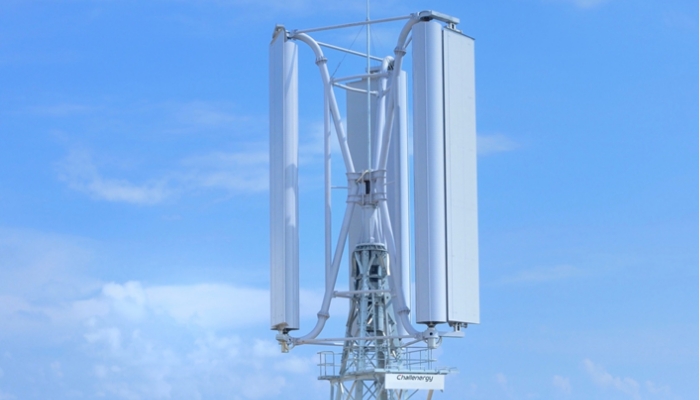
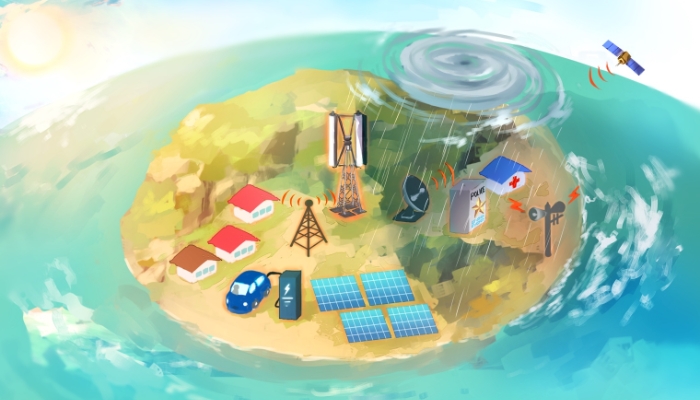
Contribution to Climate Change Adaptation by introducing a microgrid adopting the typhoon-proof wind turbine
By implementing the Magnus vertical axis wind turbine capable of stable power generation even in severe wind conditions, while contributing to climate change adaptation, we will resolve challenges for isolated islands around the world, by establishment of resilience to disasters and by the realization of the local production for local consumption of energy.
This wind turbine is the world's first technology developed by a Japanese venture company.
By utilizing the "vertical axis design" that can respond to all wind directions and the "Magnus force" that is generated when vertically arranged cylinders rotate, it enables electricity generation at a wind speed of 144 km/h and no runaway or malfunction even in higher winds.
In island areas, where tropical storms such as hurricanes frequently strike, and the main power supply is fossil fuel, the probability of the disruption of power and communications during a disaster is high. This wind turbine composing a self-supporting distributed micro-grid system would accomplish the local production for local consumption of energy during regular times. Even during disasters, this system can provide evacuation information and emergency communications by ensuring stable power and communication via satellite links, thus contributing to the improvement of resilience and post-disaster reconstruction in the event of disasters which is becoming severer.
Challenergy Inc.
http://copjapan.env.go.jp/cop/cop25/en/exhibition/detail_e01.html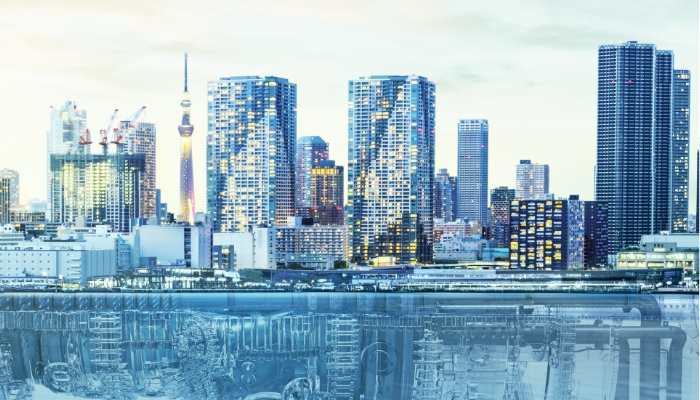
Hydrogen power generation to support carbon-neutral society
Energy Transition Technologies Driving Towards Carbon-neutral Society
In order to achieve carbon neutrality by 2050, in the energy sector, it is important to consider the balance between 3E + S and Energy Transition to gradually reduce CO2 emissions, and recover CO2. The Mitsubishi Heavy Industries Group is bringing together a wide range of products and technologies to promote the development and implementation of innovative environmental solutions, such as the production and stockpiling of CO2-free hydrogen and ammonia, the recovery and conversion of CO2, and the efficiency improvement and use of existing thermal power plants.
As an example, hydrogen fueled gas turbines can be realized by modifying a several components of an existing natural gas thermal power plant and then can be operated using the supply of hydrogen. Several important consequences result from this conversion, the immediate reduction of CO2 emissions from the plant and the stimulation of hydrogen demand, which is needed to play an important role in the energy transition.
Mitsubishi Heavy Industries, Ltd.,
Mitsubishi Power, Ltd.
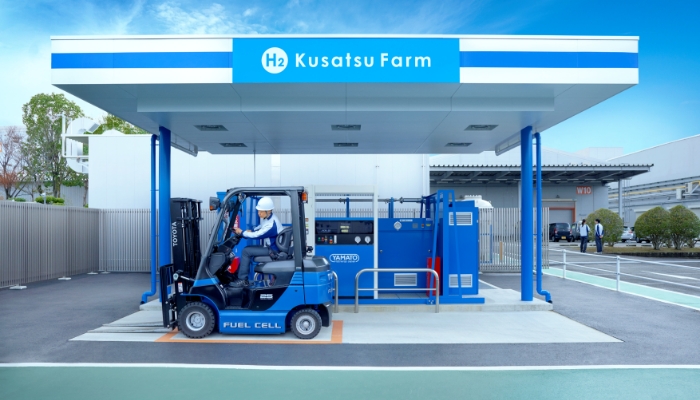
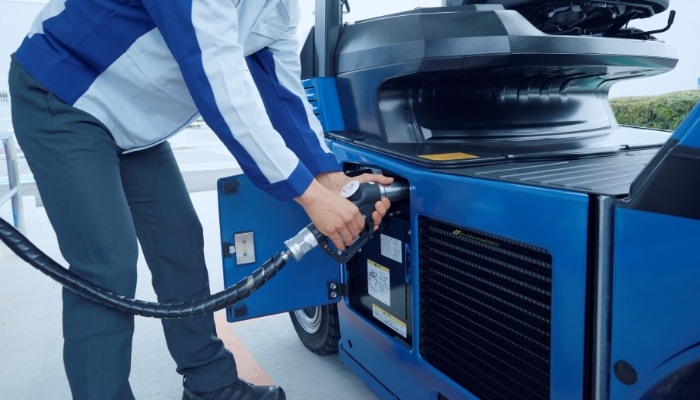
Demonstration of the Hydrogen Energy in On-site Logistics toward Social Implementation
Panasonic conducts various demonstrations with the aim of implementing hydrogen in society as a next-generation energy. At the Kusatsu Factory of Appliances Company, Panasonic Corporation, a hydrogen station "H2 Kusatsu Farm" was constructed in 2019, and fuel cell forklifts supplied with hydrogen from the station began operating on the premises.
"H2 Kusatsu Farm" produces hydrogen through water electrolysis using renewable energy. The hydrogen produced is compressed to 40 MPa and the fuel cell forklift is filled at 35 MPa. It has the capacity to produce hydrogen equivalent to two fuel cell forklifts per day, and is expected to contribute to CO2 reduction in on-site logistics.
Panasonic Corporation
https://news.panasonic.com/global/press/data/2019/11/en191118-2/en191118-2.html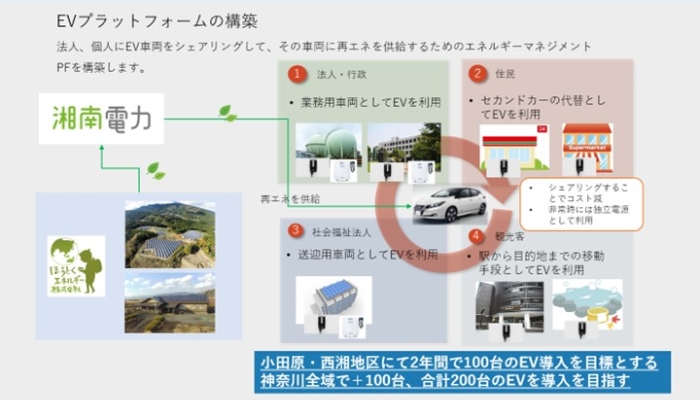
What we do @Odawara

Road map to marginal cost zero of transport
REXEV, professional team in energy industry, create a new future of carbon neutral society and e-mobility
REXEV, aprofssional team in energy industry, has decided to use electric vehicles not only as a means of transportation but also as a moving power plant to build a social transportation system with no environmental load and to reduce the travel limit cost to zero.
Our main business is
(1) Car sharing service and operation by using e-mobility (electric vehicle) and local renewable energy
(2) Energy management business that controls the energy of e-mobility (electric vehicles, e-bikes, e-buses, etc.) and utilizes it for peak cuts, charging by renewable energy, and system stabilization of power grid.
In 2020, in cooperation with Odawara City, Kanagawa Prefecture and Shonan Electric Power Co., Ltd., we started EV car sharing and energy management business, and are expanding to other regions and corporations.
Going forward, we will continue to maximize the value of e-mobility as a means of transportation and energy resources (moving storage batteries), and promote the introduction of e-mobility in corporations and local governments.
REXEV Inc.
https://rexev.co.jp/en/vision-mission/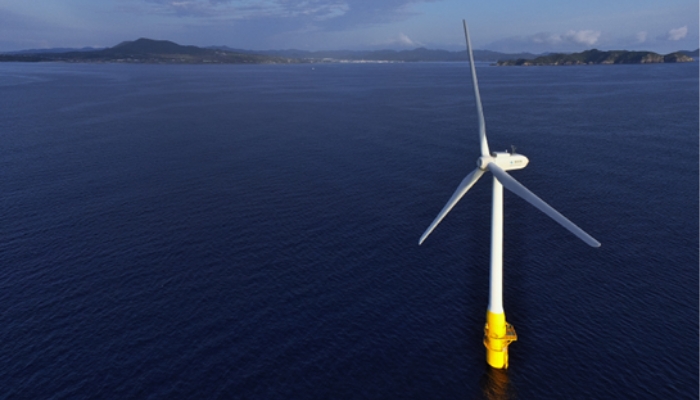
撮影者:西山 芳一

Floating offshore wind turbines open-up the new era of the decarbonization
Floating Offshore Wind Farm
The world’s first Hybrid Spar type structure which uses concrete in the lower part and steel in the upper part was adopted. This enables both a reduction of construction cost and high stability in water. A 2MW demonstrative floating offshore wind turbine was successfully installed in 2013 and since then, it has been resisting to several typhoons annually. Commercial operation has started from April 2016.
Decarbonization of Remote Islands
Utilizing the sea around the island, floating offshore wind power generation produces hydrogen from electricity that far exceeds the consumption on the island and sells it outside the island. Even if the power system connected to the mainland is inadequate, disaster countermeasures will be possible with the stable and inexpensive energy supply to the island and the hydrogen stockpiled for shipping, and the island's economic development and safe and secure life can be realized
TODA CORPORATION
https://haenkaze.com/en/
Light-duty Truck Powered by Fuel Cell

Fuel Cell
Ministry of the Environment , Government of Japan
Technology Development and Demonstration for Light-duty Truck Powered by Fuel Cell
This fuel-cell powered light duty truck (FC truck) was developed by Tokyo R&D Co., Ltd. under the commission of the Ministry of the Environment. The FC truck is a zero emission vehicle with longer driving range than EVs (210km) and shorter refueling times (approx. 5 mins.) which makes it a good potential option for logistics applications. The electrification of commercial vehicles is hindered by short range and long charging times but the FC truck has the potential to solve these problems. Hydrogen can also be produced and stored without harming the environment. To realize a sustainable society, we would like to propose the adoption of FC powered vehicles.
Tokyo R&D Co., Ltd.
